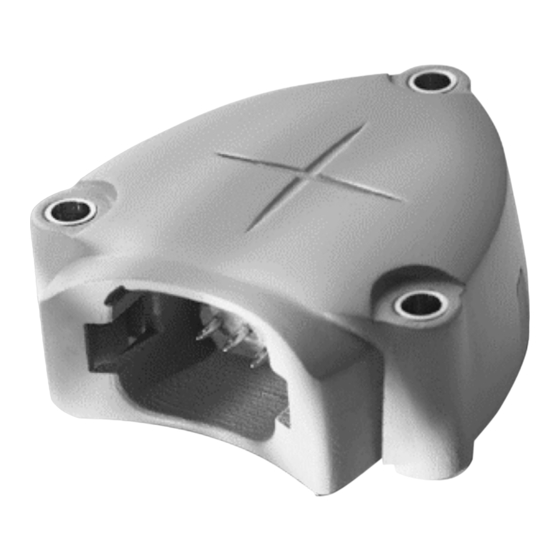Subscribe to Our Youtube Channel
Summary of Contents for elobau N3 Series
- Page 1 Betriebsanleitung Neigungssensor Typ N3.../N4... Operating instructions Tilt sensor type N3.../N4... 25.05.2007...
- Page 2 900591 / 25.05.2007...
- Page 3 N3xKxxx N3xAxxx N3xDxxx N4xAxxx N4xDxxx N4xKxxx 900591 / 25.05.2007...
-
Page 4: Technical Data
5, 6 Relay 1 7, 8 Relay 2 X-OUT Y-OUT The terminal assignments of the models with cable connection can be found in the corresponding datasheet. The datasheets can be requested from elobau or downloaded at www.elobau.com. 900591 / 25.05.2007... - Page 5 1.3 Type denomination The following example and table are given to explain the type denomination of the tilt sensors. Example: N4AK1 E1CC 0001 Nabcd efgh xxxx Placeholder Characteristic Meaning Number of axes One axis Two axes Housing/installation Horizontal (8-pin) Vertical (8-pin) Horizontal (cable) Vertical (cable) Vertical (8-pin / Y-axis / N3)
-
Page 6: Electrical Data
0.5 s 1.5 s Sequence numbers Assigned by elobau (*) Not applicable with selection of analogue outputs (i. e. placeholder c = A). 1.4 Electrical data On the circuit diagrams of the fold-out page, the tilt sensors are depicted in neutral position with the operating voltage applied. -
Page 7: Mechanical Data
Analogue output signals Uout: 0.5-4.5 V Iout: 4-20 mA Min. 10 kΩ (Ri = 100 Ω) Load resistance at Uout Max. 500 Ω (UB > 15 V) Load resistance at Iout Max. 250 Ω (UB < 15 V) Digital output signals Relay: 12 V / 24 V Switching voltage: max. -
Page 8: Appropriate Use
Appropriate use 2.1 Field of application The tilt sensor is designed for measuring the inclination (angle from a horizontal line) in different devices, machines etc. The ambient conditions must be checked by the user before using the tilt sensor. 2.2 Norms and guidelines The tilt sensor complies with the following European guideline: 2004/108/EC (EMC guideline) 2.3 Safety/Dangers... -
Page 9: Mode Of Operation
Function 3.1 Mode of operation The tilt sensors of series N3/N4 employ the capacitive measuring method. The sensors supply a linearised output voltage or an output current depending on the inclination (see Electrical data). In addition, different switching points can be defined which activate one or several relays. -
Page 10: Installation
Point the IR remote control towards the sensor as shown in the figure. Installation Ensure that the tilt sensor is only installed by specially-trained authorised personnel. Install the tilt sensor on a level surface (mechanically unstressed). The tilt sensor must not be modified. Connect tilt sensor, see Technical data. -
Page 11: Putting Into Operation
Putting into operation Ensure that the tilt sensor is only put into operation by specially-trained authorised personnel. Ensure that the electrical data is adhered to. Observe the operating instructions and notes provided by the manufacturer of the device. Apply operating voltage and check the proper functioning of the tilt sensor according to application. - Page 12 Version / Version: 1.0 Datum / Date: 25.05.2007 Seiten / Pages: 20 elobau Elektrobauelemente GmbH & Co. KG Postfach 1265 88306 Isny/Allgäu Germany Werk: Zeppelinstr. 44 88299 Leutkirch Germany Tel.: +49 7561 970-0 Fax: +49 7561 970-100 E-Mail:info@elobau.de Web: www.elobau.com...










Need help?
Do you have a question about the N3 Series and is the answer not in the manual?
Questions and answers